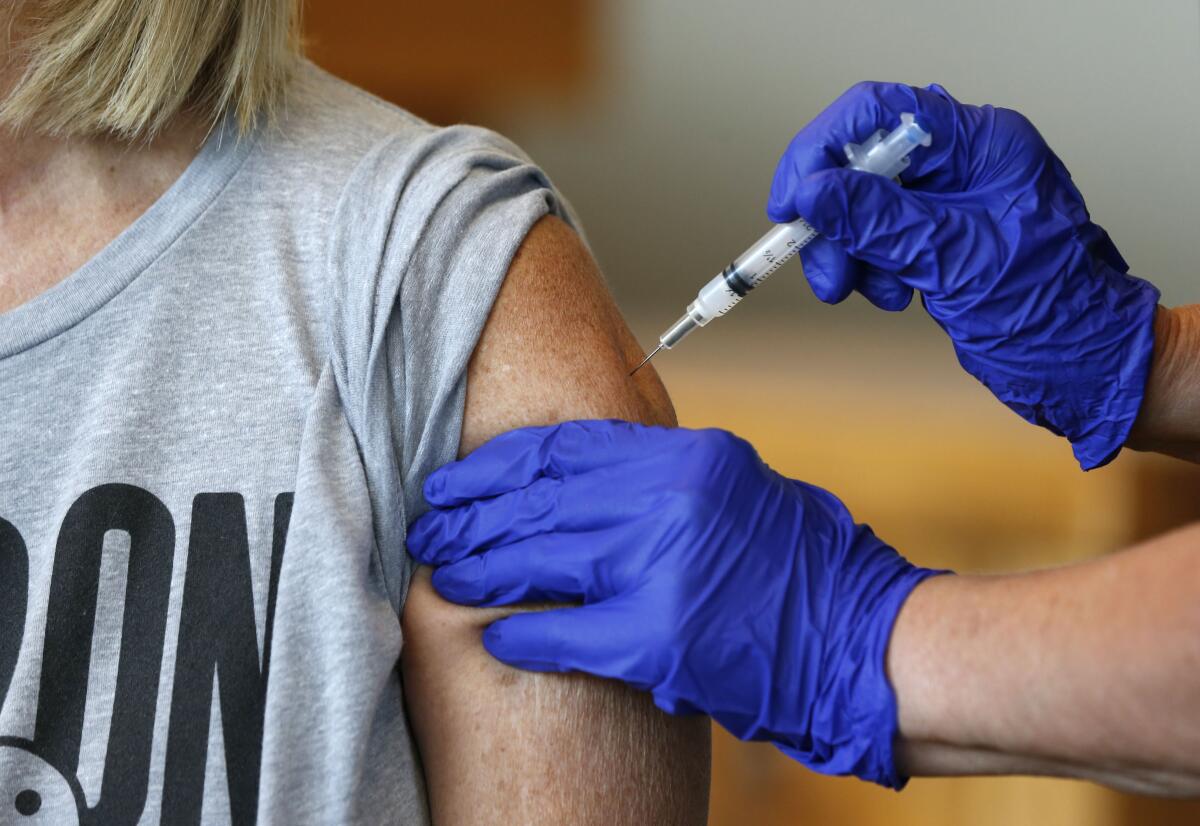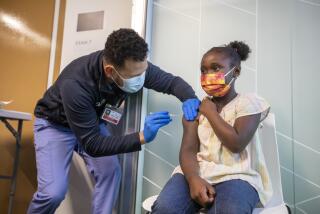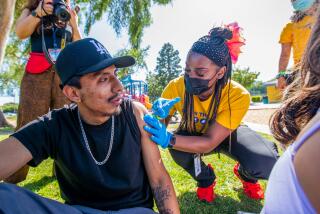Delta variant is rising. Breakthrough infections too. How should I protect myself?

The Delta variant of the coronavirus is turning out to be a more formidable foe than previously believed, largely thanks to its ability to infect — and be spread by — people who are fully vaccinated.
A confidential document prepared by people within the Centers for Disease Control and Prevention offered a dire view of the threat posed by the Delta variant, and suggested that more aggressive action will be needed to counter it.
“The war has changed,” the document warns.
We talked to some experts about how to stay safe in light of the new developments. Here’s what they told us:
So what should we be doing?
Vaccinations
Experts still agree that COVID-19 vaccines offer the safest route out of the pandemic. Indeed, the CDC document notes that as of Saturday, the rate of new infections was eight times lower among those who were vaccinated than among those who were not. Even better, the incidences of COVID-19 hospitalizations and deaths were 25 times lower for people who were vaccinated.
That said, many experts fear that if being vaccinated no longer comes with the privilege of being able to jettison face masks and social distancing, the shots will be a tougher sell for health officials to make to those who are still on the fence.
Wearing masks indoors
Researchers have found that when infected with the Delta variant, both vaccinated and unvaccinated people had similar viral loads in their upper respiratory systems. That suggests they are about equally likely to spread the virus to others — and a good reason to have recommendations or mandates for indoor mask use apply to everyone, regardless of vaccination status.
The CDC announced new guidance regarding the use of face masks this week. In parts of the country where coronavirus transmission rates are “substantial” or “high,” everyone should wear face coverings when they’re in indoor public spaces, the agency now advises.
Los Angeles County began requiring masks or other face coverings in indoor public settings two weeks ago. And California strongly recommended the same thing this week.
Return to school
Many health experts said moving forward with school reopening plans still makes sense, even though children under 12 are not yet eligible to be vaccinated.
“Children need to be in school,” said Julie Swann, a health systems engineer at North Carolina State University. “Those of us who have experienced last year, we know it.”
Swann recently published a report that found that without masking in schools, an additional 70% of children could be infected with the coronavirus within three months. Her research also shows that if masking is required in all schools, she still expects 40% of elementary school students to be infected within three months.
Despite those odds, she said, schools should reopen for the 2021-22 school year, with additional mitigation strategies in place.
“Schools and counties and states can also increase testing of their population and the community, which will also help slow the disease spread,” she said.
“If you weigh the risks and the benefits ... I think it’s worth sending kids to school as long as there are mitigation measures in place,” added Dr. Eric Ball, a pediatrician at Children’s Hospital of Orange County Primary Care Network.
What does the new data show?
The CDC cited new data from an outbreak this month in Barnstable County, Mass., where 69% of eligible residents are vaccinated. Out of 469 cases tied to gatherings at restaurants, bars and vacation homes, 74% were breakthrough infections in people who had been fully vaccinated. Among the 133 viral samples that were genetically sequenced, 90% were caused by the Delta variant or an offshoot of the strain.
The confidential CDC document also cites discouraging reports about breakthrough cases in India, where the Delta variant was first detected. The viral loads of vaccinated people who became infected with Delta were higher than the viral loads of vaccinated people who became infected with other coronavirus strains, those reports found.
The growing evidence of Delta’s propensity to cause breakthrough infections is sure to complicate efforts to persuade vaccination holdouts to roll up their sleeves for COVID-19 shots — a challenge anticipated by the authors of the CDC document.
Going forward, health officials will have to “improve [the] public’s understanding of breakthrough infections” and stop “describing breakthrough cases as ‘rare’ or as a ‘small percentage’ of cases,” the document says.
How much does this new data change things?
Overall, it now appears that the Delta variant poses more risks than initially thought but that the vaccines available in the U.S. still offer strong protection.
“Delta is basically coronavirus on speed,” said Dr. Gregory Poland, an immunologist at the Mayo Clinic in Rochester, Minn.
Scientists have established that people infected with Delta have about 1,000 times more viral particles in their upper respiratory systems than people who are infected with earlier coronavirus strains.
That difference allows Delta to jump from person to person just four days after an initial infection, said Chunhuei Chi, director of the Center for Global Health at Oregon State University. With previous strains, it took about six days for that to occur, he said.
This rapid spread helps explain why the Delta variant, which is thought to have arrived in the U.S. in March, now accounts for 82% of recent coronavirus infections in the United States, according to CDC estimates.
The data on whether Delta causes more serious illness is less certain. The CDC document cited several studies, some of them preliminary, suggesting that Delta infections were more likely to lead to serious illnesses that require hospital care.
Not everyone has found that data persuasive.
Neeraj Sood, a health policy expert at USC’s Sol Price School of Public Policy, said the CDC document relies heavily on studies that have small sample sizes and use viral load as a surrogate for disease severity, which may not necessarily be an accurate substitution.
“I didn’t look and say, ‘There’s a pretty bulletproof case that Delta is more virulent,’” he said.
Sood said the CDC has also made the mistake of focusing too heavily on the rising number of breakthrough infections, which are to be expected when an increasing share of the population is vaccinated. Researchers should instead focus on how deeply the vaccines have driven down rates of severe illness and hospitalization among people who do get infected, he said.
“If it’s not going to kill you, not going to put you in the hospital, I’m less worried,” he said.









